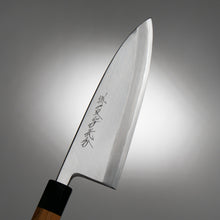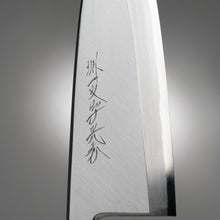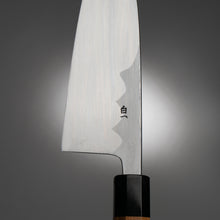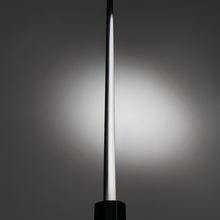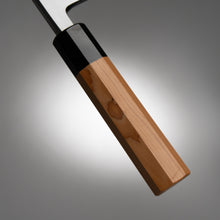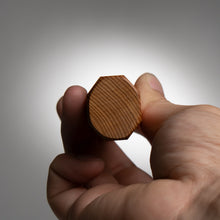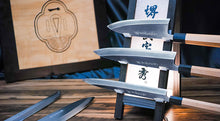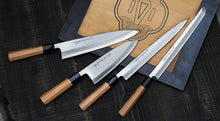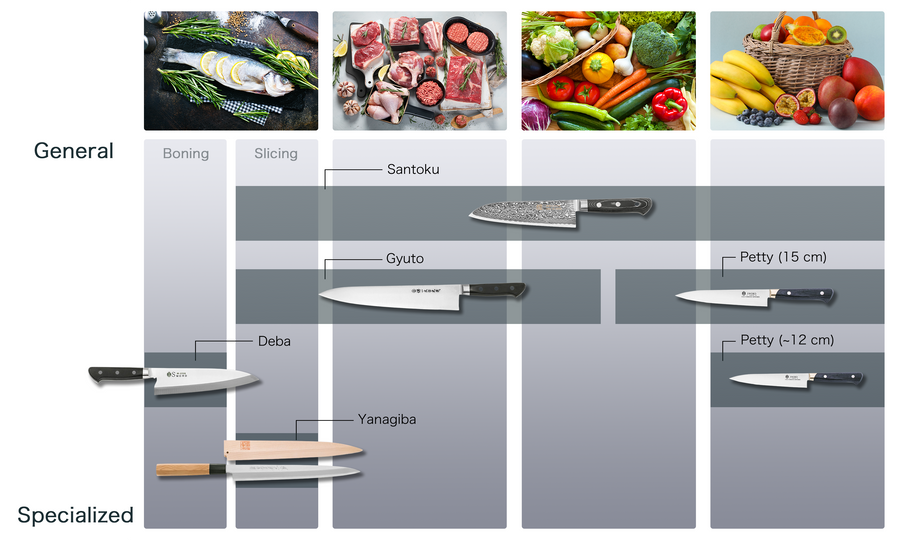
What is Montanren?
Montanren refers to the wavy pattern on the back side of the blade, where the boundary between soft iron and steel is wavy like the blade pattern of a Japanese sword. This requires a high level of skill, and there are only a limited number of craftsmen in Sakai who are able to do this.
White Steel #1 Montanren Series

White Steel #1 (Shirogami #1) is the closest steel to tamahagane used in swords and is ideal for blades with high carbon content and few impurities.
Because of this, heat treatment in the Hizukuri process (Heating and Hammering to make the final shape of the knives) is extremely difficult, and there are only a limited number of craftsmen in Sakai who can forge this steel.
At Sakai Ichimonji Mitsuhide, the sharpness, which is the greatest feature of White Steel #1, is maximized by the best craftsmen’s Hizukuri Process. The blade is made with excellent forging technology to create a tenacious blade that is easy to sharpen while providing a long-lasting cutting edge.
These knives are filled with the essence of Sakai Ichimonji Mitsuhide, who always place importance on sharpness.
| Product number | Actual Blade Length (mm) | Full Length (mm) | Total Weight (g) |
|---|---|---|---|
| 1d9s-150 | 150 | 295 | 260 |
| 1d9s-165 | 165 | 320 | 290 |
| 1d9s-180 | 180 | 340 | 355 |
| 1d9s-195 | 195 | 360 | 420 |
| 1d9s-210 | 210 | 375 | 450 |
| 1d9s-225 | - | - | - |
| 1d9s-240 | - | - | - |
| Blade | Material Name | Handle |
|---|---|---|

Single Edged |
White Steel #1 | Yew octagonal handle |

Deba
Deba knives are often used to fillet fish. The blade is the heaviest of all Japanese knives and is capable of chopping through fish bones and heads easily.Professionals use a 210 mm type to cut Sea Bream and Yellow tail and a 150 mm type to cut small fish such as horse mackerel. For home use, a 150 mm knife is often used.

White Steel #1
The steel closest to Tamahagane, boasting high edge retention while staying easy to sharpen. Recommended for those who seek the most premium and pure sharpness experience.
Carbon Steel
White Steel #1 has higher carbon levels than White Steel #2, giving it both better hardness ratings and longer edge retention. This is done without sacrificing the ease of sharpening and lack of impurities that White Steel is known for, creating an ideal steel for those who want the sharpest cutting experience.
This steel is difficult to forge with, requiring high levels of skill to produce quality knives with. As our knives are forged, quenched and sharpened by skilled artisans, we're able to produce these premium knives.
If you're seeking the ultimate sharpness, White Steel #1 is for you.
*NOTE: Carbon Steel is susceptible to rust if it is not properly cared for. Please clean and dry the blade regularly during use and after use.

Yew octagonal handle
Japanese yew wood has been used for thousands of years as a material for shaku (a ritual baton used by the emperor and high-class officials in ancient Japan, and Shinto priests now) due to its beautiful grain patterns and high durability. Also known for its high natural oil content and long lifespan, it's a popular material for high-end furniture and wood carvings. As the years pass, the wood's color darkens, giving it an attractive appearance unique to each piece.
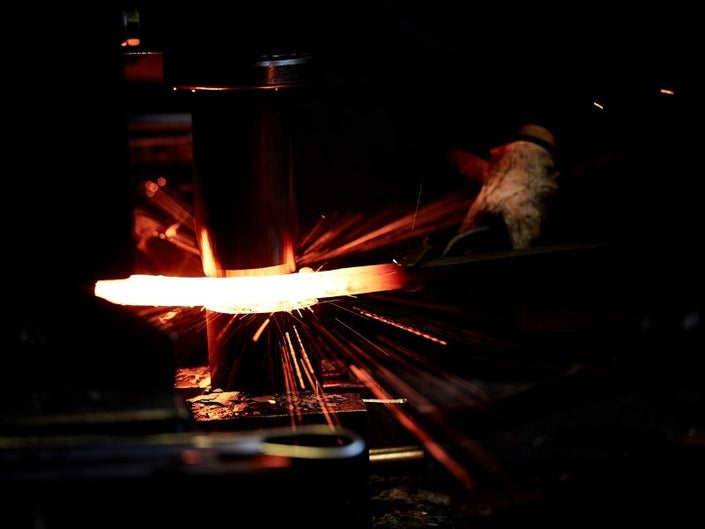
Forge Welded
Forge Welded knives undergo a forging process where steel is heated to high temperatures and then shaped with a hammer. This carefully done process changes the internal structure of the steel, producing a blade with superior hardness levels. Highly skilled craftspeople forge, quench, and create the knife's cutting edge by hand, resulting in a sharp blade with long edge retention.

Optional Engraving
Optional Engraving Service
Sakai Ichimonji provides complimentary engraving using either Japanese Kanji or English Alphabet. Please specify your preference. For details, please visit here
A knife store that has supported the history of knives and food culture in Japan.
It has been 600 years since the birth of swordmaking in the Sakai region of Japan. Sakai Ichimonji Mitsuhide's and it's craftsmen continue to build on that legacy by producing the finest blades in Japan.
This is where the culture of completing a dish of sashimi by "just cutting" and the culture of expressing sharpness as "taste" was born.
For 70 years, we have been connecting the spirit of Sakai's craftsmen with the passion of chefs in Osaka's kitchen equipment shopping district, known as the kitchen of Japan.
We are very happy that our knives can be used by people all over the world.
Precautions
After use, wash off any dirt and wipe thoroughly with a dry cloth to remove any moisture. This product is not for use with frozen foods.This product is handmade, so each piece will be different. Please use the weight and length listed as a guide. Each material is natural and may vary in color. It is not the same as the picture.We take great care with our inventory, but in the unlikely event that we are out of stock, we will contact you by email to let you know.









































